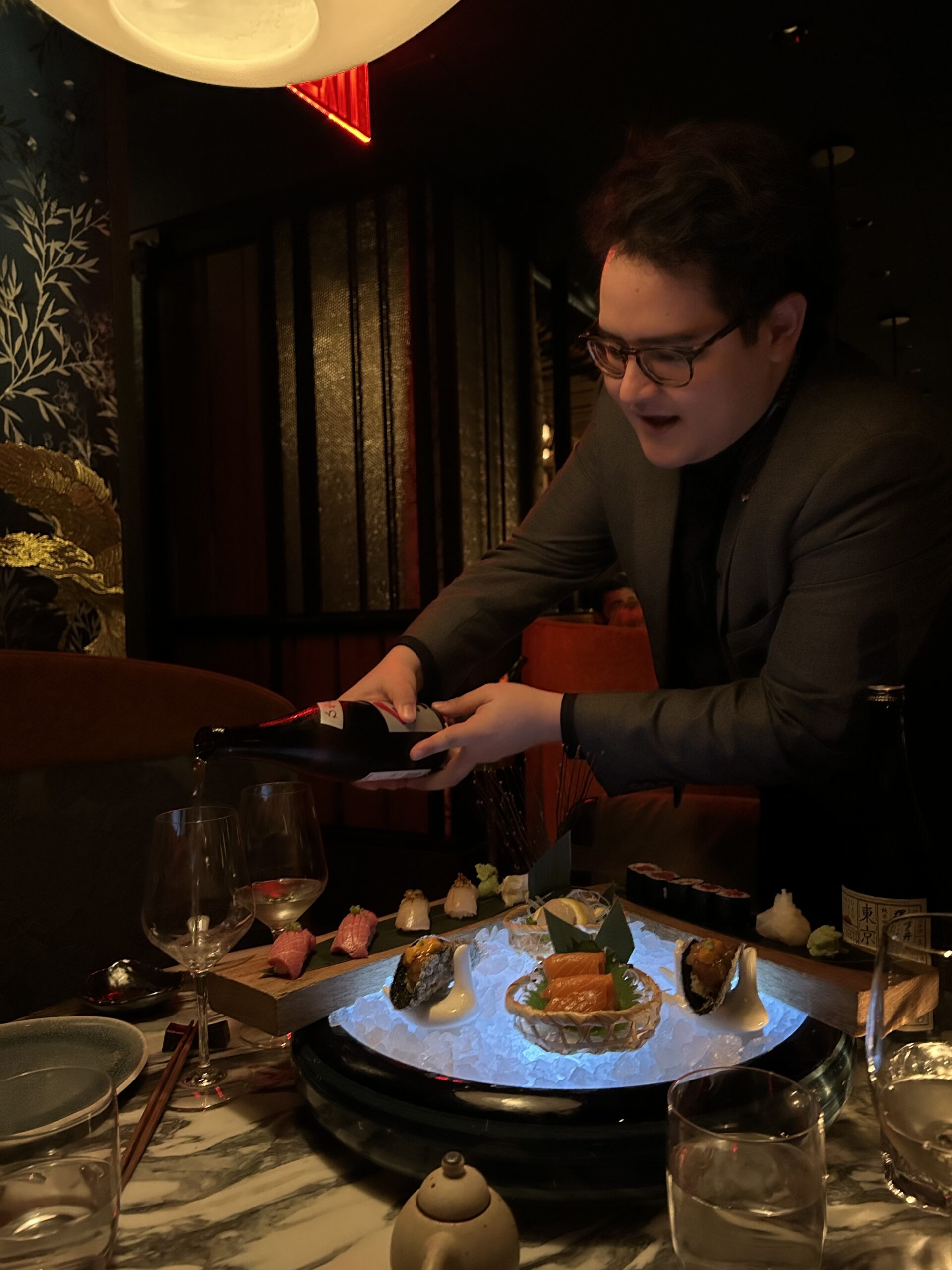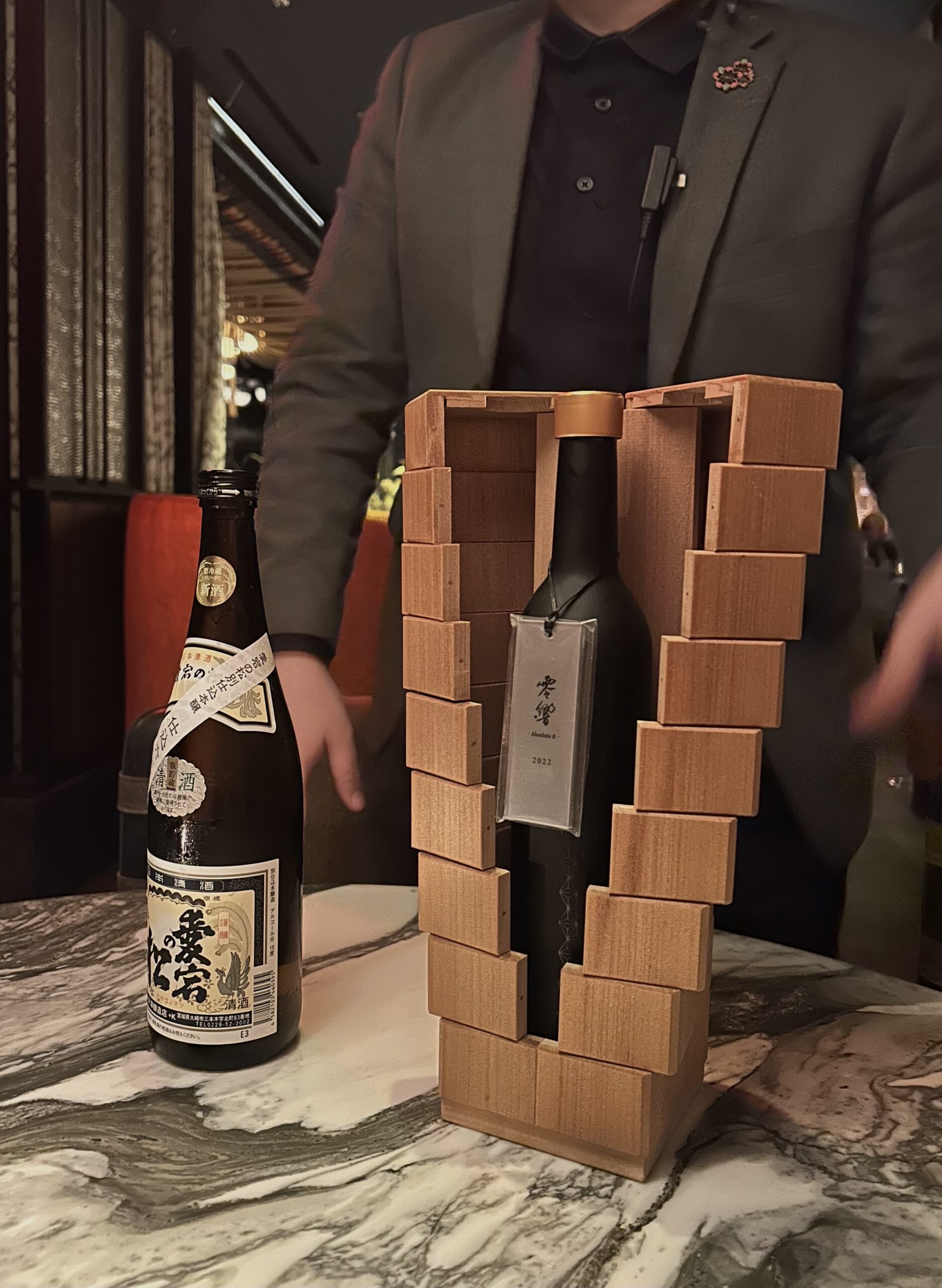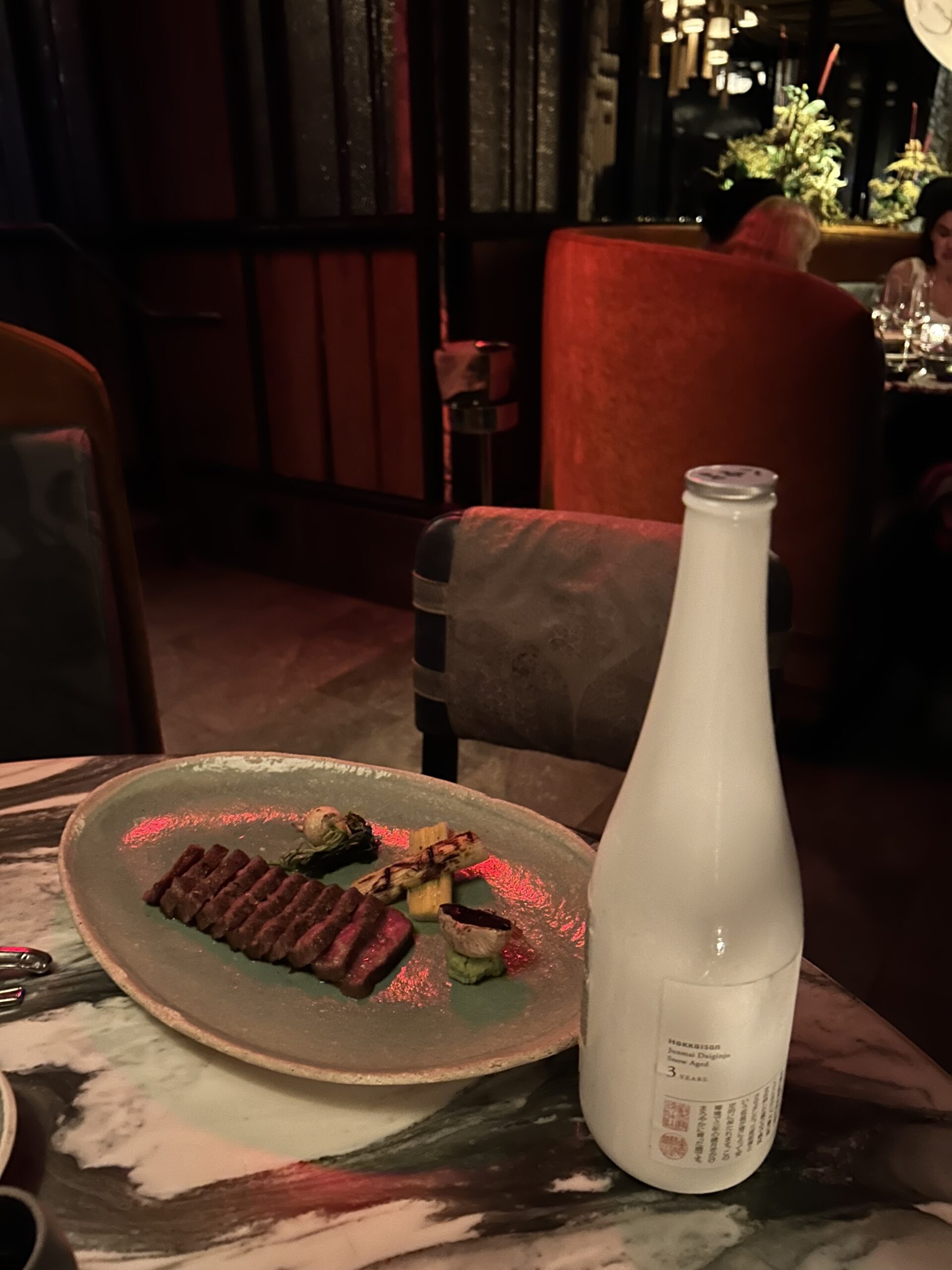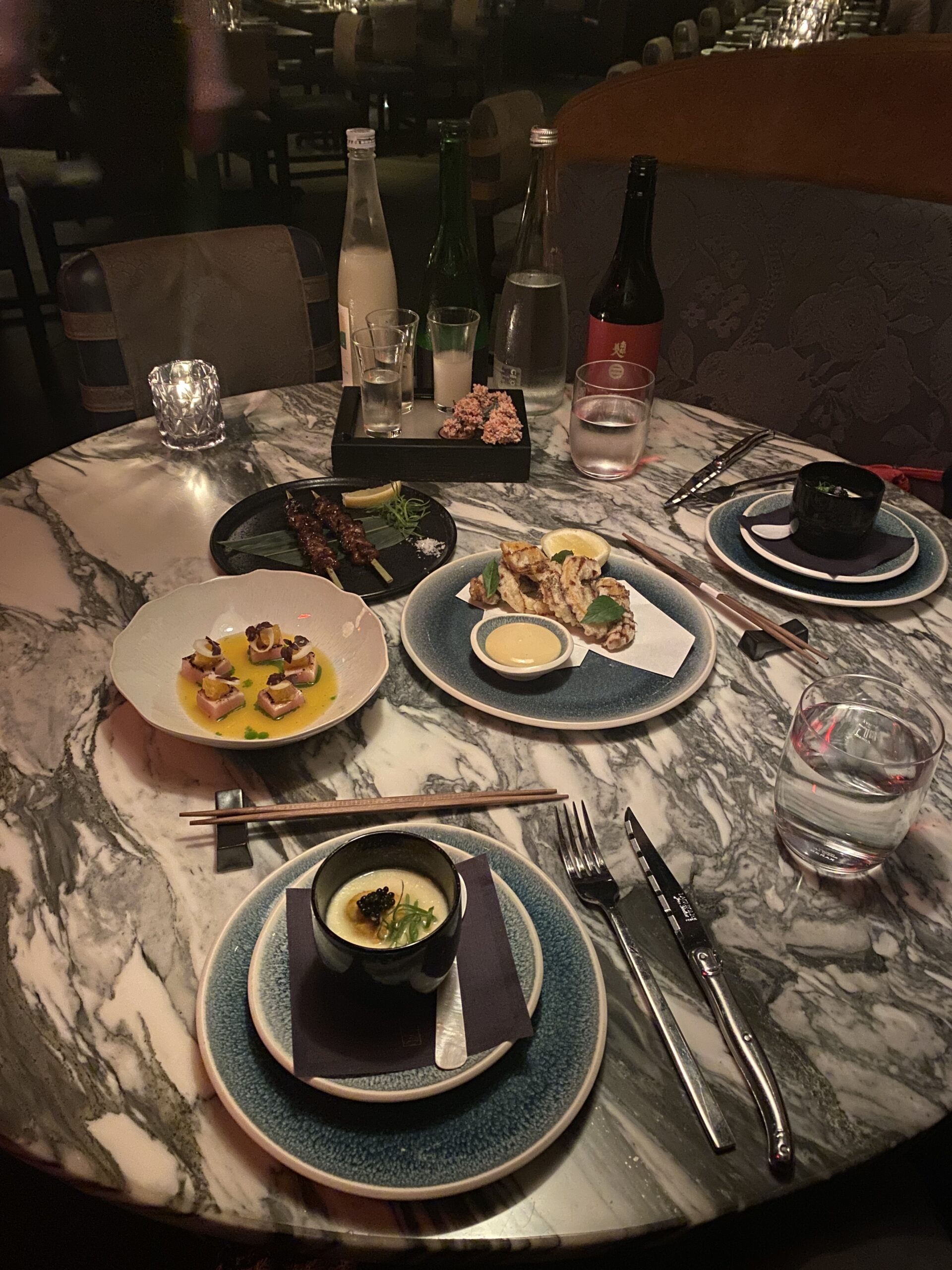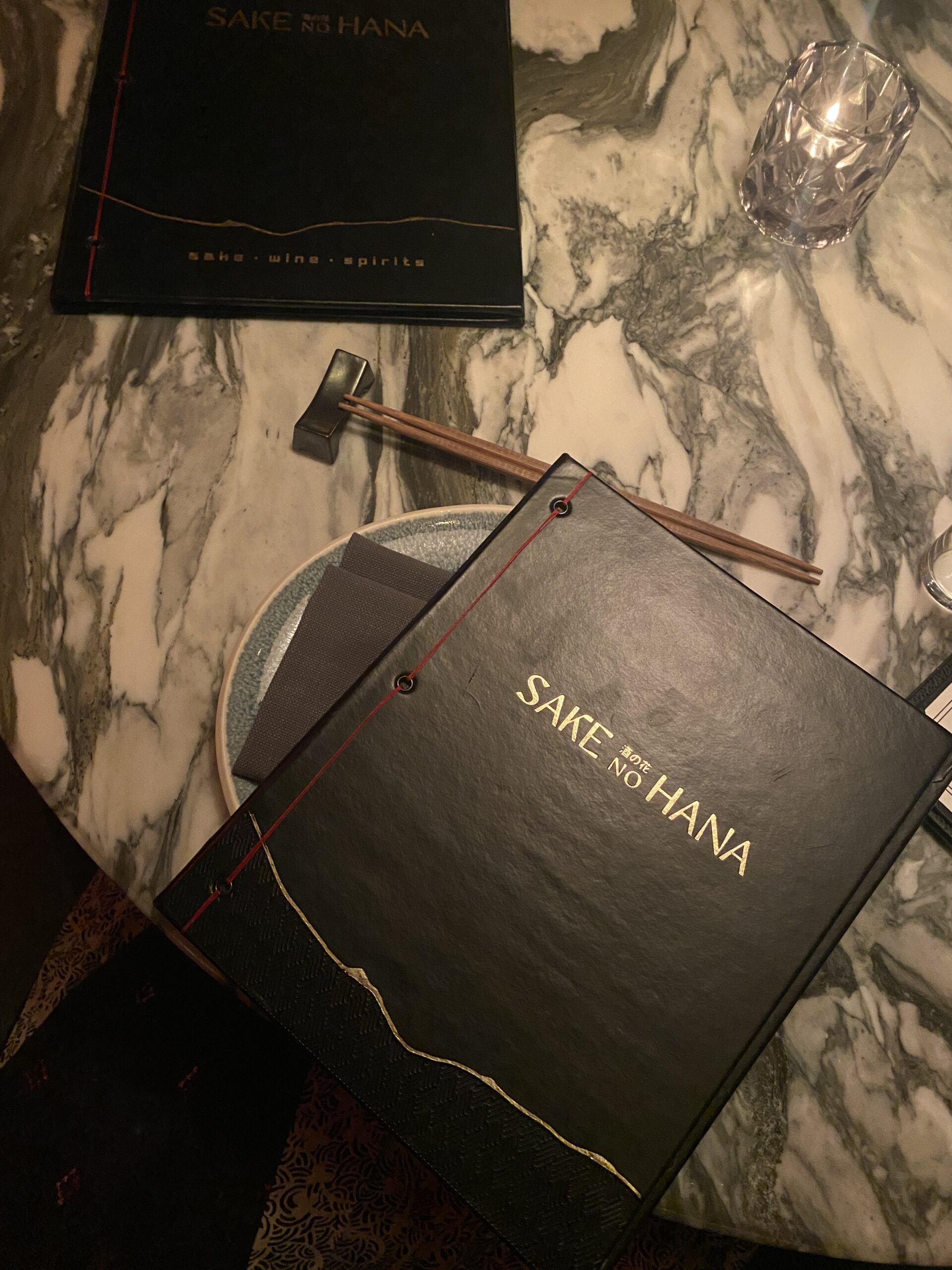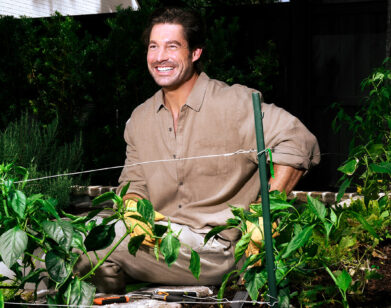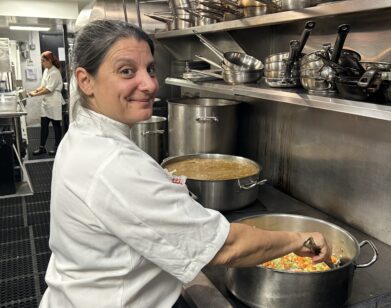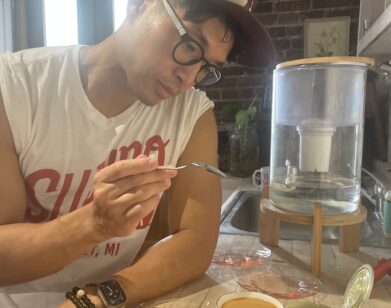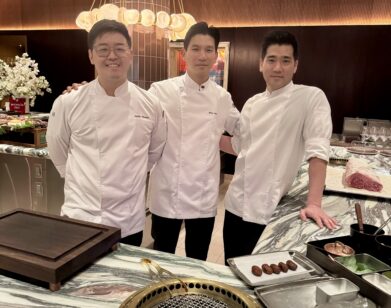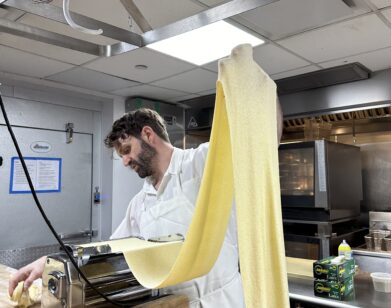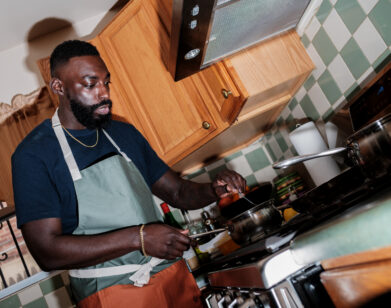LESSON
How Sake No Hana Is Spearheading New York’s Rice Wine Revolution
“Sake and food are meant to be together,” says sake sommelier Michael Wyant, and not just in a “strip mall Thai restaurant that has hot or cold.” At Sake No Hana, this marriage is facilitated by co-chaplains Wyant and Chef Jason Hall, who find harmony in punchy bites and sips. Together, they created a fall menu complete with beet and edamame salad, snow-aged wagyu, sushi towers, and a four-page sake list. To celebrate World Sake Day, the Lower East Side restaurant invited us for a taste-test. Eight bottles later, we were hooked. But it wasn’t just us—there was hardly a wine glass in sight as Wyant converted patrons one-by-one. The morning after, we hopped on a call to talk about New York’s sake revolution and the best bottle for aspiring rice wine converts.
———
EMMA STOUT: Michael, I’m sure you explained this last night, but what’s the difference between Daiginjo, Ginjo, and Junmai sake?
MICHAEL WYANT: I know I gave you a lot of sake, so the details might be hazy. [Laughs] The word Junmai will mean anything that’s pure rice sake. The brewers only have four ingredients in that particular brew: water, rice, yeast and koji. Then there’s a second word on the bottle, which can be Ginjo or Daiginjo. Ginjo translates to “premium” and refers to the rice polishing ratio of the sake– how much material has been taken off of the grain of rice in the cleaning process. In theory, you get a finer sake by polishing more of the material away to get to the center, starchy middle of the rice grain. If it’s Junmai, there’s no rice polishing minimum. If you have the word Ginjo on the label, you’ve polished the rice to at least 60% remaining. And then, if you have Daiginjo, which means “super premium,” it’s 50% or below. Lately, things in Japan have been moving away from this system and going towards a French-style geographical indication kind of thing. We’re getting a lot of sake coming out of Japan that people are shying away from because it’s not “Junmai Daiginjo,” but it’s still delicious.
STOUT: And you were talking about how important seasons are in terms of sake production. What does that timeline look like?
WYANT: Right now, we’re in the height of the rice-growing season. They’ll harvest at the end of November, and then they’ll start brewing in December for the really fresh stuff that comes out in January and February.
STOUT: When we’re talking about fall sake, is there anything that gives it that deeper umami flavor?
WYANT: Yeah, fall sake is called hiyaoroshi. You take a sake that’s brewed in the winter months, and then you age it over the spring and summer in-bottle. When you age sake, it gets more of that earthy undertone, some mushroom notes in there.
STOUT: You mentioned last night that there was sort of a shift in how people in Japan are making and consuming sake. It’s like a dying art form.
WYANT: At least what we’ve seen on the outside, more young people are going to other forms of alcohol. Sake is kind of seen in Japan as an old person’s drink, which is the complete opposite here in New York, where young people are the ones that are drinking a lot of sake.
STOUT: And Americans, we’re making our own sake now.
WYANT: Absolutely. We have three sake breweries in New York. Sake in the States is getting pretty big.
STOUT: When it comes to pairing sake with food, what sort of harmony are you two looking for?
WYANT: Chef [Hall] gives me the magic ingredients and then I do the “hard” thing– drinking sake and finding out what flavors dance together. For example, you had the snow sirloin and the snow-aged sake last night. They’re both aged in the same exact place in yukimuro in Niigata. You have that beautiful fatty richness of the wagyu, as well as the black garlic. So you need something that can cut through that, and the Hakkaisan has a little bit more alcohol at 17%. It has a very good structure and dryness. Whereas if you have really fresh fish, you don’t want a sake that’s going to overpower the lightness.
STOUT: I see a lot of bottles behind you. Is that part of the taste-testing process?
JASON HALL: That’s what Michael drank last night.
WYANT: Yeah, just last night. [Laughs]
HALL: I always felt like sake kind of cleans up the food a little bit. Whereas, when you’re pairing French food and French wine, it layers on the flavors. Cooking at our restaurant, Cathédrale, we have a lot of big red wines there. It’s a longer taste, but Japanese food is short and impactful. You have these intense bites and then clean sips from the sake.
STOUT: I feel like that’s one misconception about sake: that it functions like wine in a meal.
WYANT: If you talk to any brewer in Japan, I guarantee you their thought is that sake and food are meant to be together. You can’t have one without the other. Everything in Japan is trying to be harmonious but also dissonant at the same time. It’s very beautiful.
HALL: I like sake, but I don’t know it like Michael knows it. I trust him enough just to taste it and go with it. And that’s what we experienced on our research trips to Japan. We walked into restaurants, and it wasn’t this huge esoteric list. They were like, “This is the sake we’re drinking today. This is it.”
STOUT: Totally. And of course, opening the meal with a sake barrel break is so fun.
WYANT: Come on New Year’s Eve and we’ll have a 72-liter one.
HALL: That was the whole thing, to educate people but not make it feel like a PhD in sake. I feel like that entry point can be intimidating for some people because it’s not a white wine, red wine, or a martini. It’s not as familiar. But you can come in and trust us. It’s started to become the place to go for fun high-quality food and a really cool beverage program that is usually just a box check on Japanese restaurants. I was joking about Nobu a little bit last night. It’s like, “We’ll get the sake-tini, or we’ll get the lychee margarita.” You go there, and you don’t quite commit to the journey.
STOUT: What do you think is the best way to experience sake?
WYANT: Drink sake with friends. There’s a philosophy in Japan, called en, where what’s on the table isn’t really as important as the people that are around it.
STOUT: Jason, what’s the wildest food pairing you’ve had with sake?
HALL: Yoshi and I were in this restaurant in Tokyo, and the first dish we had was softshell turtle on sake rice. It was almost like eating octopus.
WYANT: No chicken sashimi while you were in Japan?
HALL: [Laughs] No. I would say the softshell turtle and sake pairing was probably my wildest one.
STOUT: How would you convince someone who thinks they don’t like sake to give it another chance?
WYANT: I tend to just make people taste it.
STOUT: Force it down their throat?
WYANT: [Laughs] “A little taste, just a little taste, I promise you.” A lot of people, their experience with sake is that strip mall Thai restaurant that has hot or cold. And then you come to New York, where we have so many great options. You can really reopen people’s minds. I’ve definitely had those occasions at Sake No Hana where I see people drinking a lot of wine, and then I go to them with the Nanbu Bijin, that red bottle at the beginning, and it totally turns them around. They’re like, “Wait a minute, I didn’t know sake could be this good.” It’s just a matter of getting it in front of people.
STOUT: So the Nanbu Bijin is a good beginning bottle for sake novices?
WYANT: Absolutely, it’s very balanced. There’s very subtle notes of melon and other orchard fruits when it’s cold, but there’s still nice acidity to it. And it can be served at any temperature. Just leave it on the table, and it’ll warm up throughout the dinner.
HALL: Sounds like it would pair well with the root vegetable salad you had in the first course.
STOUT: Yeah, with the beets and edamame. What else was in it?
HALL: A little smoked crème fraîche.
STOUT: The crème fraîche was so good. And also, the melon at the end was crazy.
HALL: Yeah, what’d you think of that?
STOUT: It was the sweetest fruit that I’ve had in my life. Nature’s candy.
HALL: It’s wild. I take a spoon a day of that thing.
STOUT: What do you hope people take away from Sake No Hana?
HALL: For me, it’s fun. We wanted to bring a sense of izakaya spirit to New York. We take the ingredients seriously, we take the technique seriously, we take the sake seriously, but we don’t take ourselves so seriously. Michael’s been able to take something that’s really artisanal and make it a fun entry point for the guests that may not know too much about it.
STOUT: Michael, you were telling me about a sake brewer at the restaurant last night. It seems like you’re really creating a community around food and drink.
WYANT: Absolutely. Japanese food and bars in New York… The community is very, very tight-knit. Everybody knows everybody. Everyone’s at the same tasting. Next month, we’re hosting the governor of Niigata and other producers and farmers from Niigata. And everybody’s going to be there, from the dive bar person all the way up to the three-star Michelin people. It’s very much a communal thing going on.

